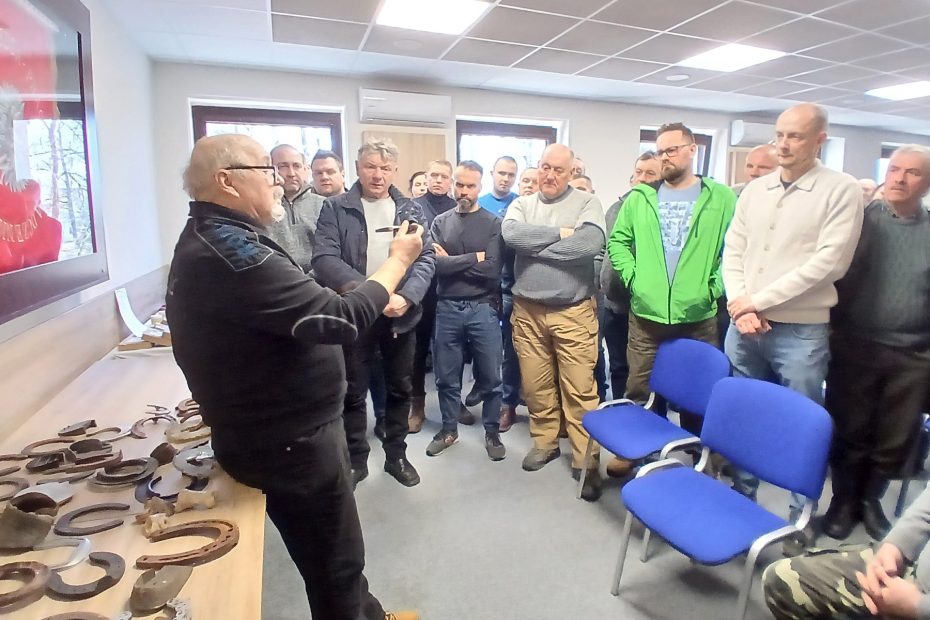On 19–20 February 2025, a workshop on horseshoeing was held at the Podlaski Agricultural Advisory Centre in Szepietowo entitled “Cold-blooded horse welfare – a workshop on horseshoeing”. The main organizer was the Department of Farm Animal Biodiversity Conservation and Horse Breeding of the National Research Institute of Animal Production, the Bialystok Horse Breeders Association and the Podlaski Agricultural Advisory Centre in Szepietowo.
The workshop was a response to the needs of the breeding community as an element in the dissemination of knowledge on horse health and welfare. The theoretical and practical classes were conducted by Józef Antczak – a Master Blacksmith with 42 years of experience in the profession, who, in addition to extensive knowledge of horses and blacksmithing, also displayed his oratorical talents.
The meeting was attended by more than 50 people – breeders participating in programs for the genetic resources conservation of Sokólski and Sztumski cold-blooded horses, as well as employees of agricultural advisory centers from Szepietowo and Olsztyn and employees of the Podlaski Horse Breeders Association.
During the theoretical part, the following issues were discussed:
– history of horseshoeing
– equine posture defects
– structure and anatomy of horse limbs
– trimming theory
– shoeing theory
– types and models of horseshoes and ways of shoeing horses in various equestrian competitions
– proper foal rearing and hoof care (starting with foal birth, mare behavior, first steps, time spent with mother, effect of seasons on hoof growth, first correction)
– hoof diseases such as laminitis, bruising, hoof canker, hoof puncture and pricking, coronary band injury, sand cracks, clefts, soft pasterns
– safe shoeing work
This section introduced the problems associated with the way horses are trimmed and the most common mistakes made. Part of the lecture was devoted to the correct hoof correction in foals, which determines the future correct structure of the limbs and, consequently, the value of the horse. The lecturer emphasized the importance of early correction of faults and preventive treatment. In the next part, practical classes were held, during which the participants were able to carry out the correction procedure on their own on horses that had been brought in by nearby breeders.
The training was accompanied by a lively discussion testifying to the interest in the presented topics. It was stated that this type of workshop is particularly needed, as the number of people involved in horseshoeing in Poland is extremely small (about 200 people), which results in horses being trimmed too infrequently and often experiencing problems and defects, resulting in lameness and elimination from use. All participants expressed the hope that such classes will continue in the future.
